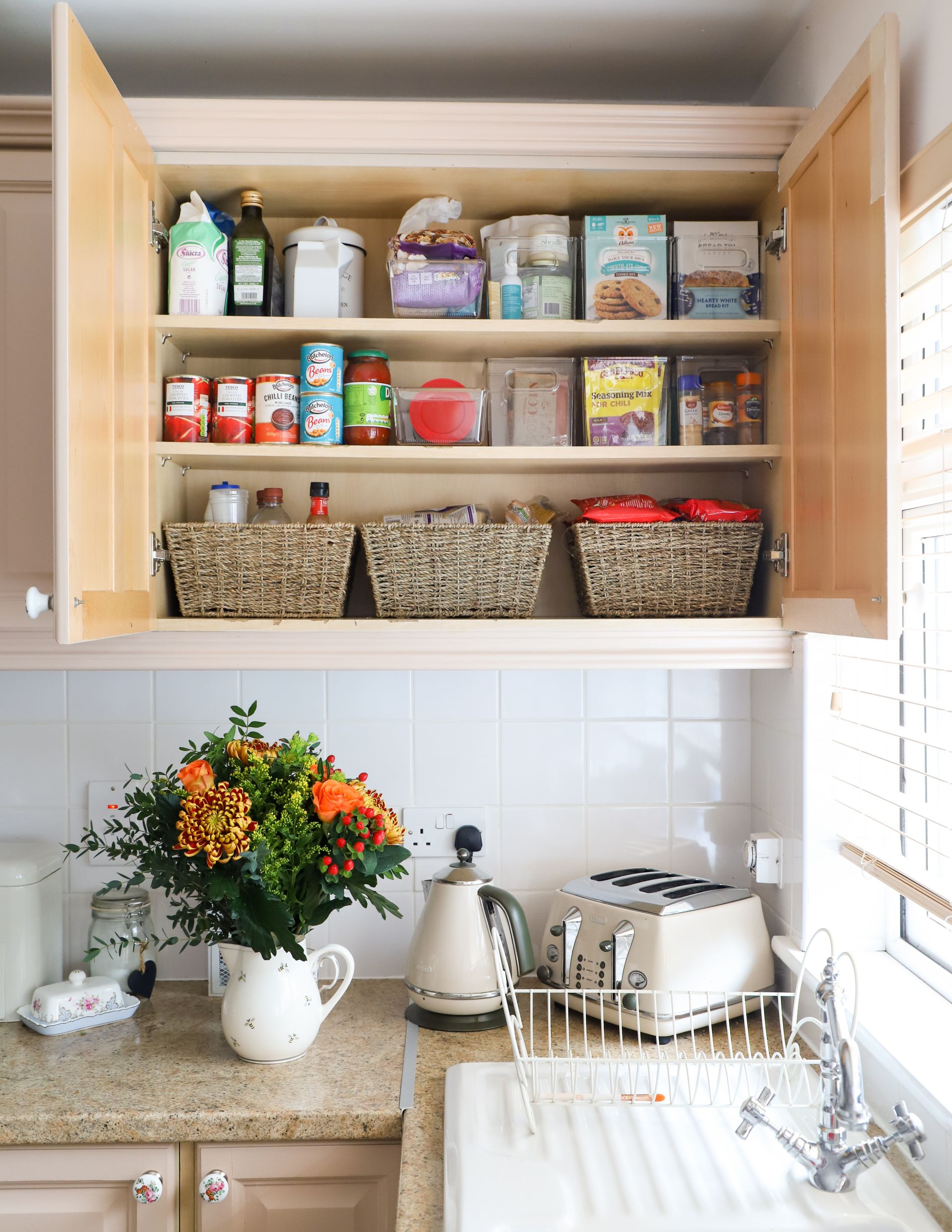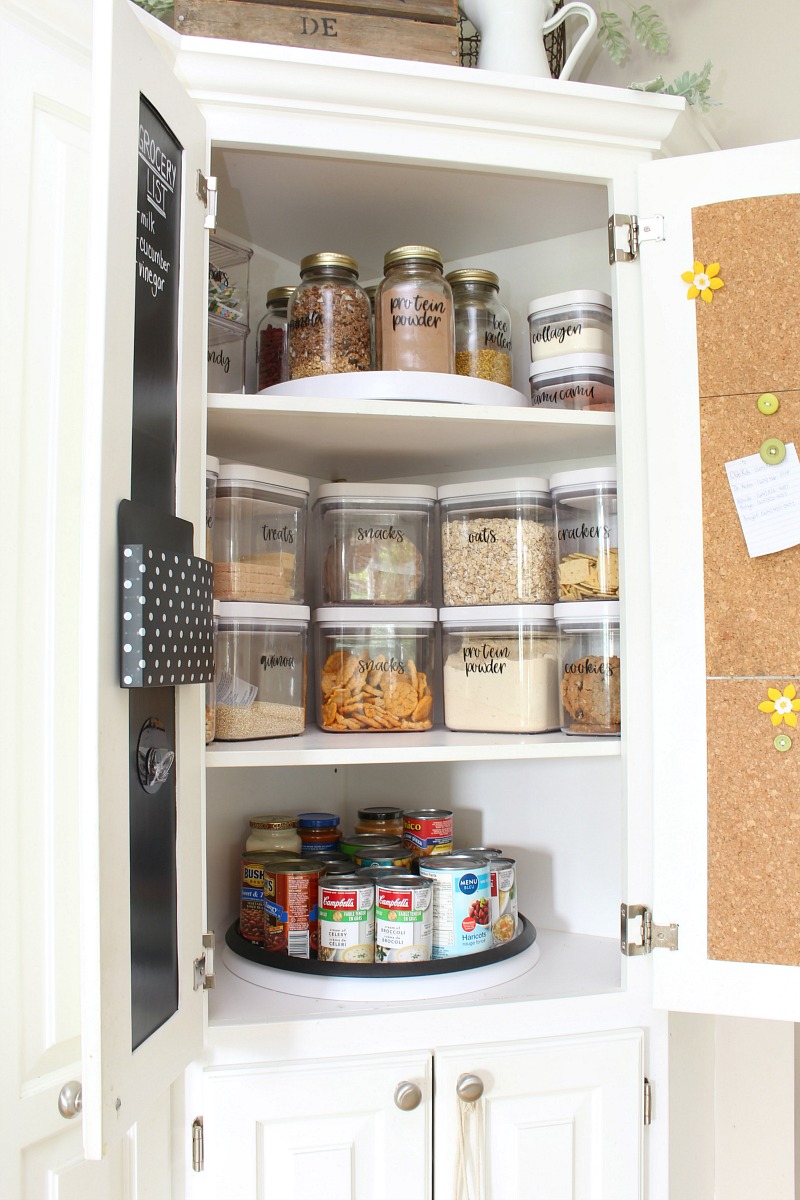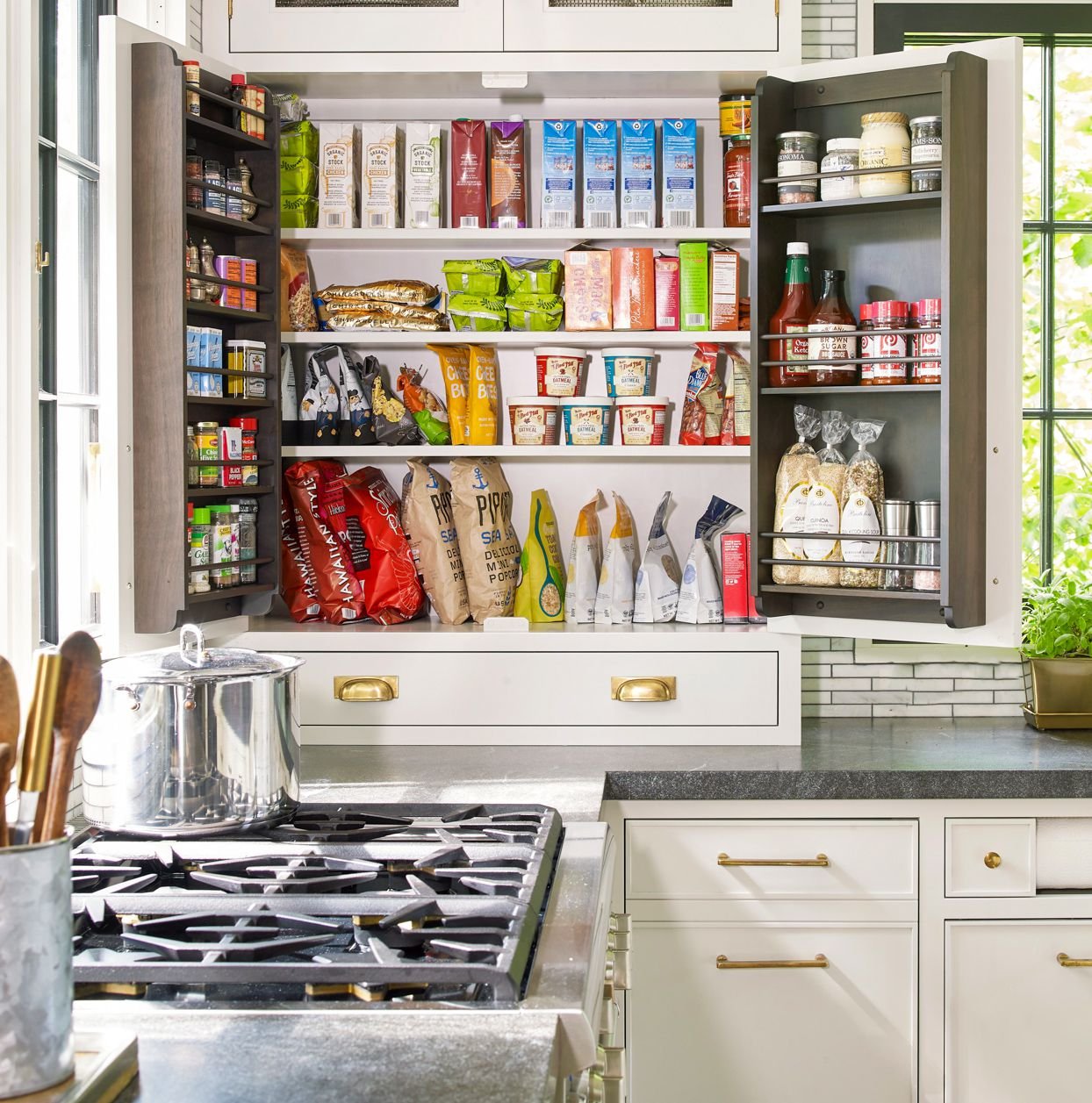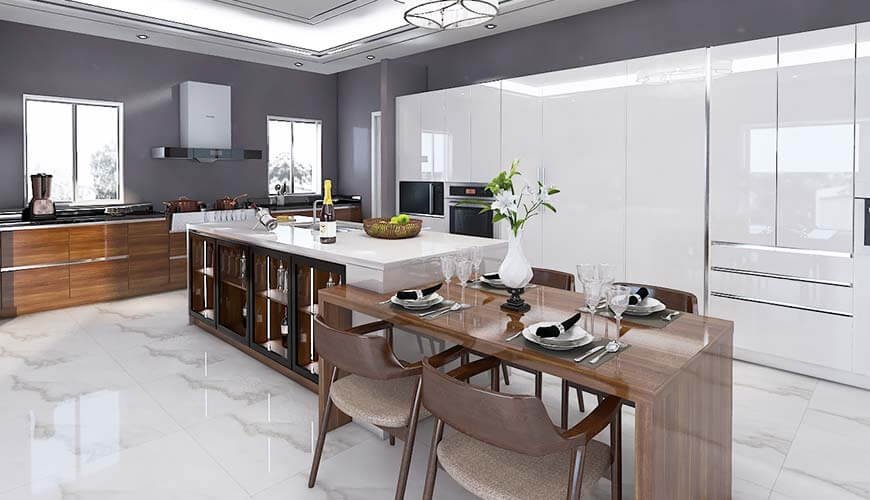Organize kitchen cabinets by grouping similar items together and using clear containers or labels. Ensure frequently used items are easily accessible.
A well-organized kitchen enhances functionality and efficiency. Grouping similar items, such as spices or baking supplies, saves time during meal preparation. Clear containers or labels help you quickly find what you need. Place frequently used items in accessible locations to avoid unnecessary searching.
Consider using shelf risers, lazy Susans, or drawer dividers for better organization. Regularly declutter to keep your kitchen tidy. This approach not only simplifies cooking but also makes maintaining a clean kitchen easier. Properly organizing your kitchen cabinets creates a more enjoyable and stress-free cooking environment.
Table of Contents
ToggleAssess Your Needs
Organizing kitchen cabinets begins with understanding what you need. This step ensures you use your space wisely. Let’s break it down into two main tasks: identifying frequent items and noting storage issues.
Identify Frequent Items
First, make a list of items you use daily. These could be:
- Plates
- Cups
- Bowls
- Cutlery
Place these items in easy-to-reach spots. You might want to use the lower shelves for this.
Next, consider items used weekly. These might include:
- Mixing bowls
- Baking trays
- Specialty utensils
Store these in higher or less accessible areas. This keeps your daily items easy to grab.
Note Storage Issues
Check your current storage setup. Identify any issues such as:
- Items stacked too high
- Hard-to-reach corners
- Cluttered shelves
Make note of these problems. They will guide you on what to fix.
Consider using dividers or organizers. These can help manage space better. For example:
| Problem | Solution |
|---|---|
| Stacked items | Use shelf risers |
| Hard-to-reach corners | Install lazy susans |
| Cluttered shelves | Use bins or baskets |
These small changes can make a big difference. They help you keep your kitchen organized and functional.

Credit: www.daintydressdiaries.com
Declutter
Decluttering your kitchen cabinets is the first step toward a more organized space. Removing unwanted items creates more room for essentials. This process also makes it easier to find things when you need them.
Sort And Purge
Start by emptying all your kitchen cabinets. Lay everything out on a table or counter. Group similar items together. For example, place all your baking supplies in one pile and your cooking utensils in another.
- Identify duplicates.
- Check for expired food.
- Look for broken items.
Throw away anything that is broken or expired. Keep only what you use and love. This step will make the rest of the process easier.
Donate Or Recycle
Many items you no longer need can help others. Consider donating gently used kitchenware. Local shelters or community centers often accept these items.
Here’s a quick guide:
| Item | Action |
|---|---|
| Duplicate utensils | Donate |
| Old Tupperware | Recycle |
| Unopened food | Donate |
Recycling is also a great option for items that can’t be donated. Check your local recycling guidelines. They often list specific kitchen items they accept.
By sorting, purging, donating, and recycling, you can declutter effectively. Your kitchen cabinets will be more organized and functional.
Categorize Items
Organizing your kitchen cabinets can seem like a daunting task. One effective strategy is to categorize items. This method ensures your kitchen remains tidy and functional. Let’s explore how to categorize items effectively.
Group By Function
Grouping items by function can simplify your kitchen tasks. Consider these categories:
- Cooking Tools: Place pots, pans, and utensils together.
- Baking Essentials: Store mixing bowls, measuring cups, and baking sheets nearby.
- Food Storage: Keep plastic containers, foil, and wraps in one spot.
- Cleaning Supplies: Organize sponges, dish soap, and towels in one cabinet.
Divide By Frequency
Dividing items based on frequency of use can boost efficiency. Items you use daily should be easily accessible. Store less-used items in harder-to-reach places. Here’s a simple table to illustrate:
| Frequency | Item | Storage Location |
|---|---|---|
| Daily | Plates, glasses, cutlery | Lower cabinets |
| Weekly | Blender, mixer | Mid-level shelves |
| Monthly | Seasonal dishes, special cookware | Top cabinets |
By following these guidelines, you can create a more organized and functional kitchen. Remember, the key is to keep the most-used items within easy reach. Store seldom-used items where they won’t clutter your space.
Plan Cabinet Layout
Organizing kitchen cabinets can seem like a daunting task. But, with a proper plan, it becomes much easier. A well-organized kitchen saves time and makes cooking more enjoyable. Below are some tips to help you plan your cabinet layout effectively.
Map Out Zones
Start by mapping out different zones in your kitchen. Think about how you use your kitchen daily. Create zones for cooking, baking, and storage.
- Cooking Zone: Store pots, pans, and utensils near the stove.
- Baking Zone: Keep baking sheets, mixers, and ingredients together.
- Storage Zone: Place pantry items, Tupperware, and canned goods in one area.
Mapping out zones helps you keep related items together. This makes it easier to find what you need quickly.
Consider Accessibility
Think about accessibility. Place frequently used items within easy reach. Store less-used items on higher or lower shelves.
| Item | Ideal Location |
|---|---|
| Plates and Bowls | Near the dishwasher |
| Cooking Utensils | Next to the stove |
| Spices | Close to the cooking zone |
| Heavy Appliances | Lower cabinets or pantry |
Accessibility is key to a functional kitchen. Arrange items so you don’t need to reach or bend too much.
Use these tips to plan your cabinet layout. Your kitchen will be more organized and efficient.
Use Organizers
Organizing your kitchen cabinets can be a game-changer. One of the best ways to maximize space and maintain order is to use organizers. They help keep everything in its place, making your kitchen more functional and efficient.
Shelf Dividers
Shelf dividers are incredibly useful for separating items on a single shelf. They allow you to stack items vertically, making better use of your cabinet’s height. For example, you can place plates on one side and bowls on the other.
- Maximize vertical space
- Keep items separated
- Easy to install
These dividers are especially helpful in tall cabinets. You can use them to create different sections for different types of kitchenware. This makes it easy to find what you need quickly.
Pull-out Bins
Pull-out bins are another fantastic organizer for your kitchen cabinets. These bins can be easily pulled out, giving you easy access to items stored at the back. They are perfect for storing pots, pans, and even food items.
- Easy access to items
- Reduces clutter
- Versatile storage solution
These bins can come in various sizes and materials. Choose ones that fit your cabinet dimensions and meet your storage needs. They help you utilize deep cabinets more effectively.
| Organizer | Benefit |
|---|---|
| Shelf Dividers | Maximize vertical space |
| Pull-Out Bins | Easy access to items |
Using these organizers can transform your kitchen cabinets. They make your kitchen more efficient and easier to navigate.

Credit: www.cleanandscentsible.com
Maximize Space
Organizing your kitchen cabinets can be a game-changer. By maximizing space, you ensure everything has its place. This makes cooking and cleaning much easier. Let’s explore two effective methods: Vertical Storage and Nested Containers.
Vertical Storage
Using vertical space can transform your kitchen cabinets. Place taller items like cutting boards and baking sheets upright. This not only saves space but also makes them easier to grab. Use shelf risers to double the storage area within a cabinet. These create an additional layer for storing smaller items.
- Install hooks on the inside of cabinet doors.
- Use vertical dividers for trays and lids.
- Store pots and pans on vertical racks.
Consider using magnetic strips for knives and metal utensils. This keeps them off the counter and within easy reach.
Nested Containers
Nesting containers is another excellent space-saving strategy. Stack containers of different sizes within each other. This method is perfect for bowls, measuring cups, and storage containers. It helps keep similar items together and saves a lot of room.
Follow these steps for effective nesting:
- Group containers by size and shape.
- Stack from largest to smallest.
- Use lids as dividers to keep stacks stable.
Utilize drawer dividers to keep nested containers organized. These dividers prevent them from shifting and keep your drawers neat. For extra convenience, label the containers and their lids. This way, you always know where everything belongs.
Label Everything
Organizing kitchen cabinets can be easy and fun. One simple method is to label everything. Labels help you find items quickly. They also keep your kitchen neat and tidy.
Clear Labels
Use clear labels for each item. They should be easy to read. Clear labels make it simple to find what you need. Use a large font size and a simple style. Avoid fancy fonts that are hard to read. Labels should be placed where they are visible.
- Large font size: Easy to read
- Simple style: No fancy fonts
- Visible placement: Easy to find
Consider using waterproof labels. They will last longer. Clear labels help everyone in the house.
Consistent Style
Keep a consistent style for all labels. This makes your kitchen look organized. Use the same font, size, and color for all labels. This consistency makes it easy to scan your cabinets. It also adds a touch of elegance to your kitchen.
| Element | Description |
|---|---|
| Font: | Use the same font for all labels. |
| Size: | Keep the font size consistent. |
| Color: | Choose one color for all labels. |
A consistent style helps everyone in the house. It makes it easy to find items. It also makes your kitchen look beautiful.
Maintain Order
Maintaining order in your kitchen cabinets is essential. Well-organized cabinets save time and reduce stress. Follow these steps to keep your kitchen tidy and efficient.
Regular Clean-up
Regular clean-up is a must for keeping kitchen cabinets organized. Set a weekly schedule to wipe down shelves and doors. Remove crumbs and spills to avoid attracting pests.
Every week, check for expired food. Dispose of items past their prime. Rearrange contents to make frequently used items accessible.
- Wipe down shelves and doors.
- Remove crumbs and spills.
- Check for expired food.
- Rearrange contents for easy access.
Periodic Reassessment
Periodic reassessment helps maintain order in the long run. Every three months, evaluate your kitchen cabinets. Declutter items you no longer use.
Consider your storage needs. You may need to reorganize to accommodate new items. Invest in storage solutions like bins and racks to optimize space.
Make a list of items to keep, donate, or discard. Label shelves and containers for easier access.
| Action | Frequency |
|---|---|
| Evaluate cabinets | Every 3 months |
| Declutter items | Every 3 months |
| Reorganize space | As needed |
- Evaluate cabinets every three months.
- Declutter items you no longer use.
- Reorganize to accommodate new items.
- Label shelves and containers.
:max_bytes(150000):strip_icc()/organize-your-kitchen-cabinets-2648622-04-6931115e04784603b782c69ec181d6ec.jpg)
Credit: www.thespruceeats.com
Frequently Asked Questions
How To Maximize Kitchen Cabinet Space?
Utilize shelf risers, stackable bins, and door-mounted racks. Group similar items together for easy access.
What Are The Best Cabinet Organizers?
Consider pull-out shelves, lazy Susans, and drawer dividers. These tools help keep items orderly and accessible.
How To Store Pots And Pans?
Hang them on a wall rack or store them in deep drawers. Use dividers to prevent scratches.
How To Organize Spices In Cabinets?
Use tiered spice racks or magnetic strips. Label jars for quick identification and place frequently used spices at eye level.
What To Put In Upper Cabinets?
Store less frequently used items like seasonal dishes or specialty appliances. Keep daily use items within easy reach.
How To Declutter Kitchen Cabinets?
Remove expired or unused items. Donate duplicates and reorganize the remaining items by category.
How To Organize Pantry Cabinets?
Use clear containers for dry goods. Label everything and group similar items together for a neat look.
How To Organize Under The Sink?
Install pull-out bins or use stackable shelves. Store cleaning supplies in caddies for easy access.
What Are Cabinet Decluttering Tips?
Regularly assess and remove items you don’t use. Invest in organizers to keep everything in place.
How To Store Baking Sheets?
Use vertical dividers in a cabinet or a dedicated rack. This keeps them easy to access and saves space.
Conclusion
Organizing kitchen cabinets can transform your cooking space into a functional haven. Follow these tips to maximize efficiency and enjoy a clutter-free kitchen. Remember, an organized kitchen saves time and reduces stress. Start today and experience the difference. Happy organizing!


